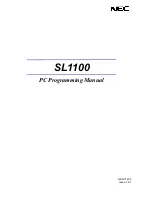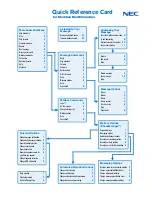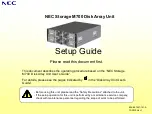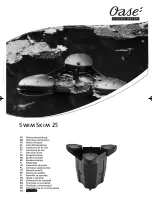
The selected channel may be ‘fired off’ in single shot mode by pressing the enter key ‘#’
and may be repeatedly triggered by multiple depressions. The message ‘tr.-A’ or ‘tr.-B’
will appear.
The pitch of the loop may be varied in a similar way to normal operation by pressing the
‘C’ key after the appropriate channel selector ‘A’ of ‘B’. A pitch may then be entered via
the keypad or the nudge controls used. The nudge controls may also be used to select
start and finish points for the loop, but operate slightly differently from normal mode, in
that as the button is held down, the nudge increments becoming progressively greater.
Releasing the button then re-depressing, starts the process again from 1mS increments.
The loops may also be ‘fired off’ by applying to the input of the appropriate channel a
signal whose envelope is sufficient to just illuminate the green level LED for that channel.
Whilst one channel is in lock in mode, the other may be used as normal for delay / pitch
change, or may be locked-in also.
-
Once the desired sample has been ‘locked-in’, in order to avoid constant re-triggering of
the loop either remove the input to channel ‘a’ or return the channel ‘a’ input level control
to zero.
Editing with the keypad
To remove a portion from the beginning of the loop first press the ‘A’ key. When the ‘A’
key is pressed the present starting point of the loop is displayed. Now enter the new start
point in milliseconds; the ‘a’ channel identifier LED will flash until the splice point has
actually been entered (i.e. until the # key has been pressed).
To remove a portion from the end of the loop first press the ‘B’ key. When the ‘B’ key is
pressed the current ‘loop end’ position will be displayed. The new loop end point must
now be keyed in again in milliseconds; the ‘b’ identifier LED will flash until the enter key
# is pressed.
Editing using the nudge keys
Editing can also be accomplished by using the nudge keys. The nudge keys allow the
ends of the loop to be incremented as well as decremented. This is a quick way of ‘fine
tuning’ the loop before use, it should be noted however that during the nudging process
some audio interference will occur.
Other effects
If the ‘C’ key is pressed it is possible to vary the pitch of the loop. The effect obtained can
be likened to using varispeed on a tape loop system. This may be accomplished by direct
entry, using the keypad, or by use of the nudge buttons. Unlike nudging the ends of the
loop, nudging pitch does not cause audio interference.
When in ‘Lock in’ mode, with software versions 2.464 upwards, if stereo pitch shift is
fitted and input on both channels, the nudge controls shift the pitch at the output in
opposite directions.
This can be used to correct the pitch of the loop in channel ‘a’ by routing channel ‘a’
output to channel ‘b’ input. The sample at channel ‘b’ output will then be shortened or
lengthened by the varispeed function, but with the original pitch retained.
S-DMX User Manual
Issue 3
Page 7
Summary of Contents for S - DMX
Page 3: ...S DMX S DMX User Manual Issue 3 Page 1 ...
Page 4: ...S DMX User Manual Page 2 Issue 3 ...
Page 24: ...S DMX User Manual Page 22 Issue 3 ...
Page 30: ...S DMX User Manual Page 28 Issue 3 ...
Page 32: ...S DMX User Manual Page 30 Issue 3 ...
Page 33: ......










































